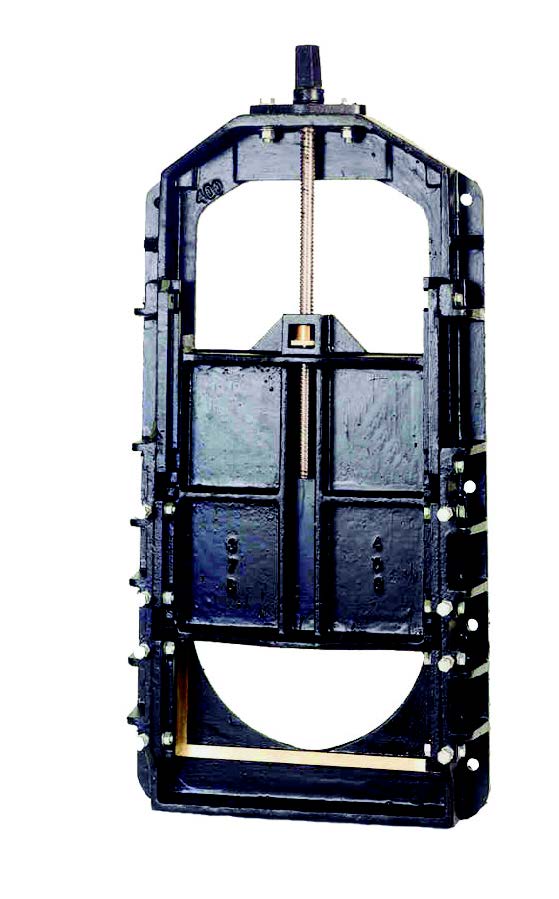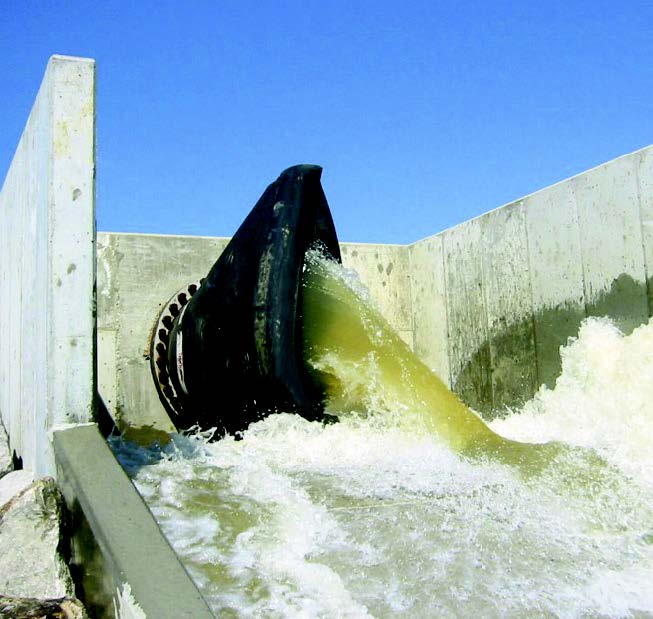What are Penstock and Discharge Valves?
This range of valves is used for the purpose of fluid control. Penstock Valves deploy a screw operated door, which can be opened and closed manually or with an electric actuator, whereas Discharge Valves allow the flow of fluids in one direction and are designed to prevent backflow.
Wall and pipe mounted flap valves can be found in the surface water drainage section.
Penstock Valves
Penstocks are a specialist flow control and isolation valve for fluids associated with water, waste water, sewage treatment plants, power generation, irrigation schemes and process plant. Penstocks are designed to cater for a wide variety of duties from low on seating (fluid forces the penstock onto wall) to high off seating (fluid forces penstock away from wall) and on/off seating (fluid forces can be both ways).

Features & Benefits
- Available with Cast Iron, Stainless Steel and HDPE doors
- Multiple operations, including handwheel or gearbox
- Optional pressure seating (on seat / off seat or both)
- Special sizes factory fabricated
- Wide range of manual operating systems available
- Remote electrical actuator options
- Robust construction with minimum maintenance
Applications
Typically utilised in river, surface/storm water and treatment works outfalls. May be bolted to flanged end of a pipeline, or bolted to wall face of outfall.
Ordering Information Required
- Quantity required
- Size of opening diameter
- Maximum working head
- On-seating / Off-seating
- Material of spindle
- Invert to coping/operating levels
- Type of operating equipment
- Liquid passing through penstock i.e., sewage, salt water, potable water
- Paint system if special operating conditions apply
- Wall or pipe mounting
- Rising or non-rising spindle
Discharge Valves
Designed primarily for end-of-pipe outfall installations, discharge valves are characterised by their pinched end or duckbill appearance designed for backflow prevention. Constructed of a rubber compound which changes it’s effective opening area in respect of the internal pressure and flow rate to allow the discharge of fluid then self closes to prevent backflow.

Features & Benefits
- Rubber construction resistant to saltwater, sewage and hydrocarbons
- Low headloss characteristics are ideal for low lying areas
- Differential pressure discharge maximises pipeline storage capacity
- Ability to diffuse effluent while preventing backflow
- Connected to end of pipe by bandseal or bolted flange
- Several versions for different applications
Applications
- Storm water discharge into lakes and seas with varying levels
- Effluent discharge where protection from flood water is required
- Airport & highways runoff water contaminated with hydrocarbons
- Pumping stations to ensure tailwater does not backflow
- Site drainage to prevent backflow flooding from canals and rivers
